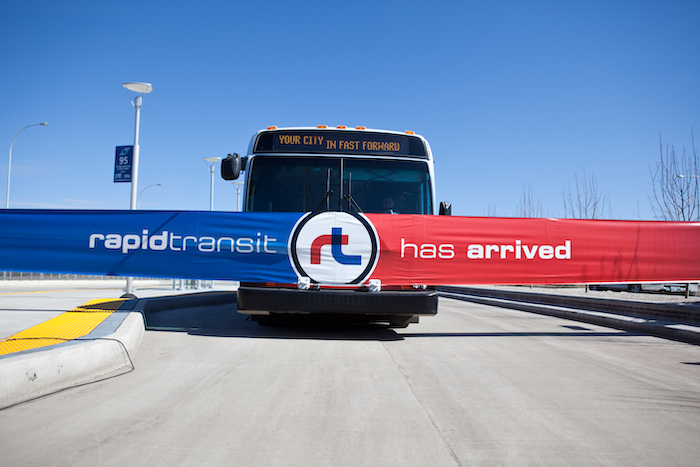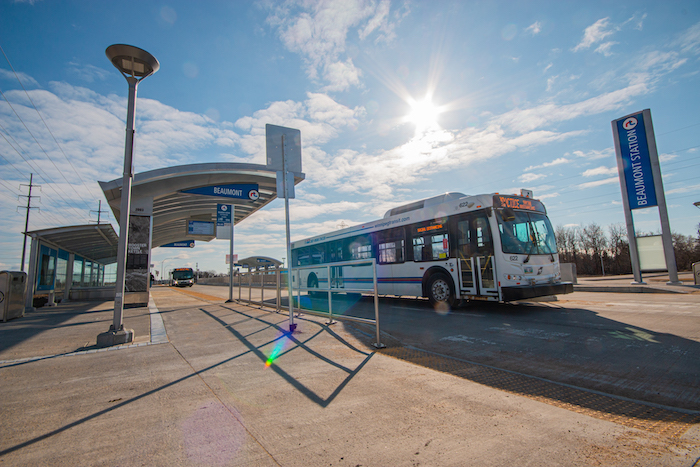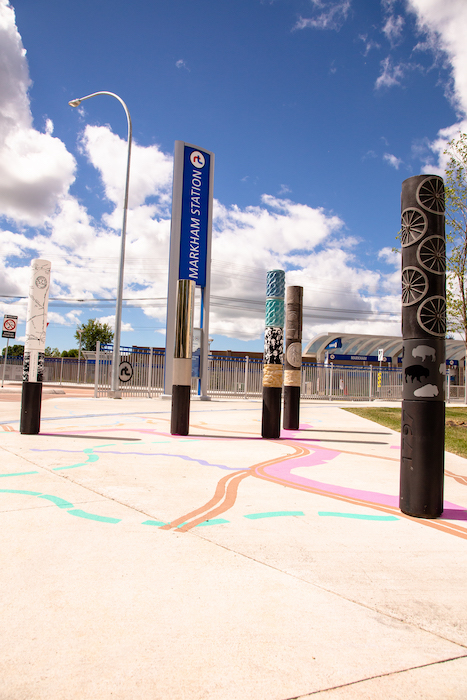
2021 #CCEawards Showcase: Southwest Rapid Transitway Stage 2 and Pembina Highway Underpass
November 24, 2021
By CCE
“The P3 model allowed this project to enjoy economies of scale and it came in under budget, which was significant.” - Jury
Category: Project Management
Award of Excellence Winner: Dillon Consulting
The City of Winnipeg identified the need for rapid transit to support long-term growth and connecting the rapidly growing southwest quadrant (which includes the University of Manitoba) with the downtown area. Dillon Consulting provided services to deliver the project under a public-private partnership (P3) model.
This is the largest capital infrastructure project undertaken by the city to date. Riders can now travel on an exclusive, bus-only right-of-way, providing frequent, reliable and high-speed service.
Achieving value for money
The City of Winnipeg retained Dillon as subject matter experts (SMEs) and representatives throughout three project stages: (1) project planning, including the functional design report, P3 business case and value for money (VFM) assessment; (2) contract development and procurement; and (3) owner’s advocate during design and construction.
With an initial budget of $587 million, SWT2 includes 7.6 km of transitway, nine stations, nine other structures, a Canadian National Rail (CN) underpass, the widening of the Pembina Highway Underpass and active transportation facilities.
A comprehensive VFM assessment by sub-consultant Deloitte TTL compared the net present value of the risk-adjusted costs of different procurement options. It found a P3 delivery model would provide positive VFM through appropriate risk transfer to a private partner.
The $90-million Pembina Highway Underpass project was bundled with SWT2 to benefit from economies of scale, attract larger international consortiums and mitigate many of the risks had these two projects proceeded independently.
Some of the key project delivery challenges included:
- extensive relocation of power and gas utility infrastructure.
- construction of a new underpass, associated rail bridges and extensive infrastructure immediately adjacent to—and while maintaining—CN Rail operations.
- widening of a major arterial underpass without impacting traffic.
- accelerating completion of Stadium Station for use during the 2017 Canada Summer Games.
Extensive stakeholder management was required for 300-plus public and private entities and interest groups. A three-tiered approach for the management of stakeholders was established by sub-consultant Landmark Planning & Design, with a two-way approach to ensure stakeholders’ interests were understood and addressed while effectively communicating project objectives and limitations. Proactive engagement was critical in mitigating scope creep and the associated cost and schedule impacts.
Scope, cost and schedule management were critical to project delivery, not only because of organizational and political oversight requirements, but also because the P3 funding agreements were subject to established schedule milestones. Any significant changes to these critical elements would significantly impact the project and transit operations of the corridor.
Through innovative project delivery and competitive procurement methods, the project realized VFM savings, reducing the initial $587-million budget to $467 million, and finding further savings during construction, for a total cost of $418 million at construction completion.
The project team met or exceeded schedule milestones, including the Stadium Station completion, turnover for training and commissioning and in-service date. The magnitude of financial savings and schedule achievements is a rarity for projects of this scale, complexity and public scrutiny.

Despite an in-service date coinciding with COVID-19, the project has met key objectives in increasing local use of public transit.
Ready for the future
This transformative project was designed to move residents from a dependency on cars to alternative, more environmentally sustainable transportation options, including the new BLUE rapid transit line and active transportation. This mode shift would reduce congestion on major routes between downtown and the southwest quadrant, including Pembina Highway.
Ensuring access to amenities for riders was an essential part of planning and design. BLUE’s amenities include conveniently located stations, real-time passenger information, heated shelters, public art, bike lockers, park-and-ride and kiss-and-ride opportunities.
The project followed a rigorous methodology to protect the environment. An inventory of all vegetation—e.g. trees, shrubs, bushes and grasslands—was taken for the pre-construction lands and then used to identify required protection, re-establishment and enhancement.
Winnipeg’s southwest quadrant is projected to grow by more than 40% in 20 years. SWT2 will support this continued growth, link downtown with major destinations in the southwest and enable direct access to intermediate neighbourhoods and efficient service for those living, working and studying in the area.
Despite COVID-19 coinciding with the project’s in-service date, key objectives have been met. Stadium Station increased safety and reduced the time to clear riders after events by 50% to 60%. University of Manitoba Station increased transit ridership by between 5% and 15%. BLUE provides frequent, reliable, high-speed service, reducing traffic congestion and improving travel times.
The long-range objectives include transit-oriented development, local economic impact, revitalization of downtown and environmental sustainability. The municipal government is already receiving development proposals, demonstrating private-sector endorsement of these objectives.
Southwest Rapid Transitway – Stage 2 and Pembina Highway Underpass (SWT2) Project, Winnipeg, Man.
Award-winning firm (owner’s advocate/engineer): Dillon Consulting, Winnipeg, Man. (Taran J. Peters, P.Eng.; Robert Taylor, P.Eng.; Crystal Cooper, PMP; Ali Campbell, P.Eng.; Kristen Parmer; Tina Sontag, CET; Kevin Breukelman, CET; Caleb Olfert, P.Eng.; Katrine Levesque, P.Eng.; Drew Monnier, P.Eng.).
Owner: City of Winnipeg.
Other key players: Landmark Planning & Design (communications and public engagement), Deloitte (finance).

